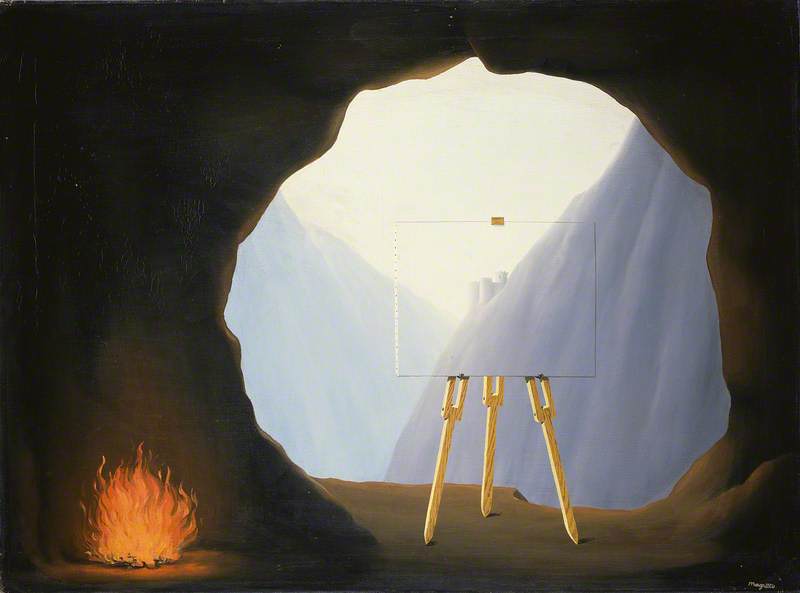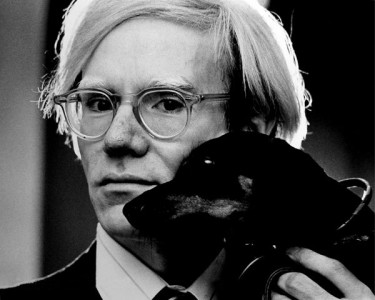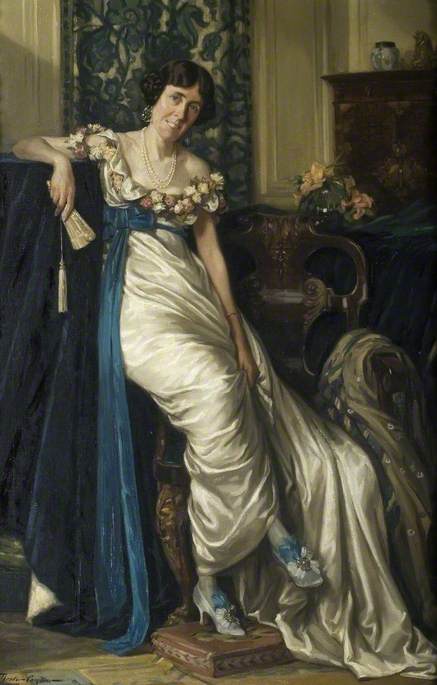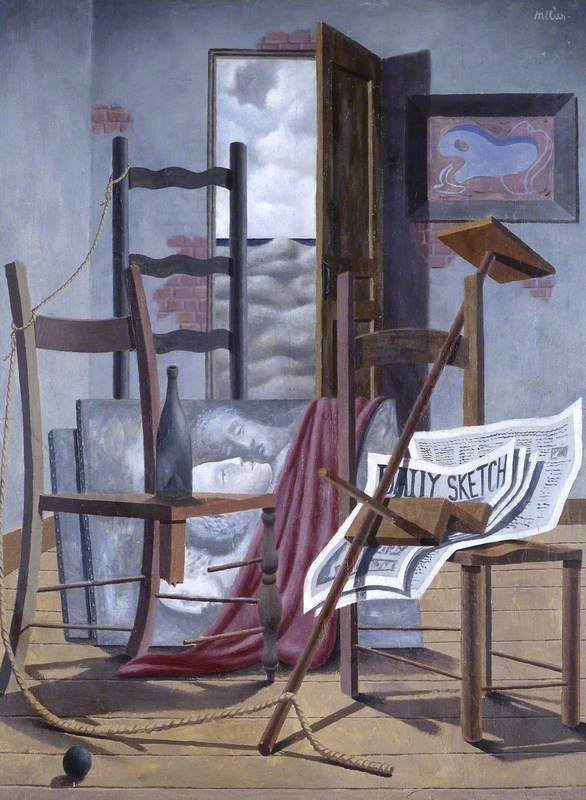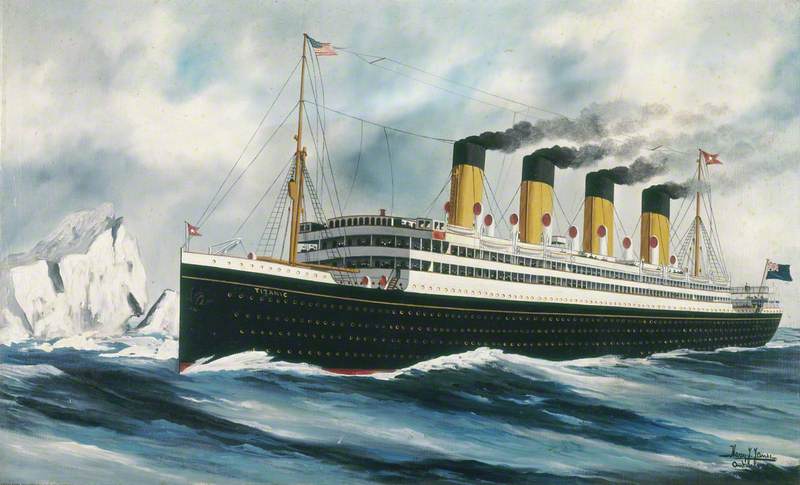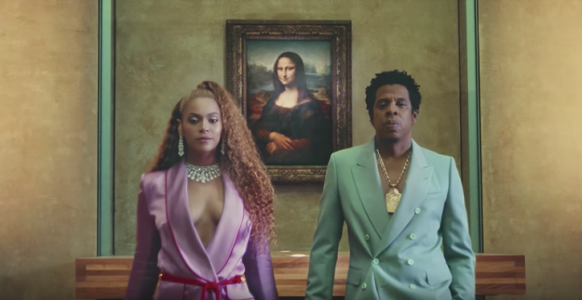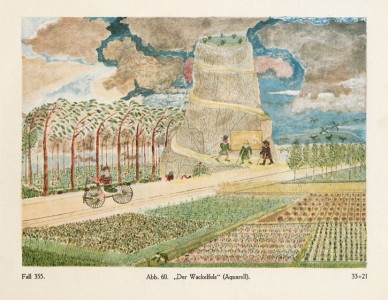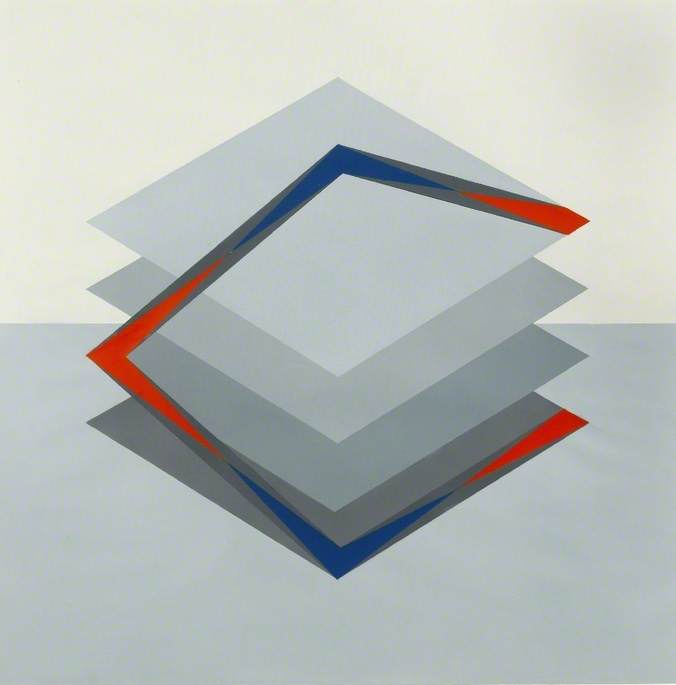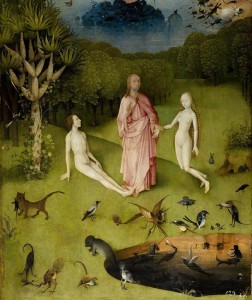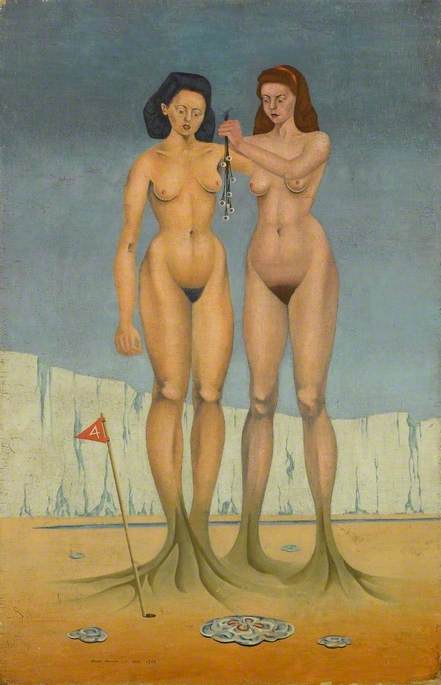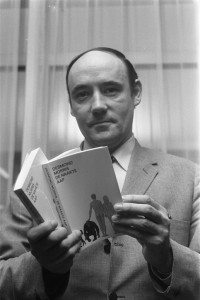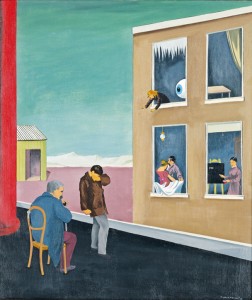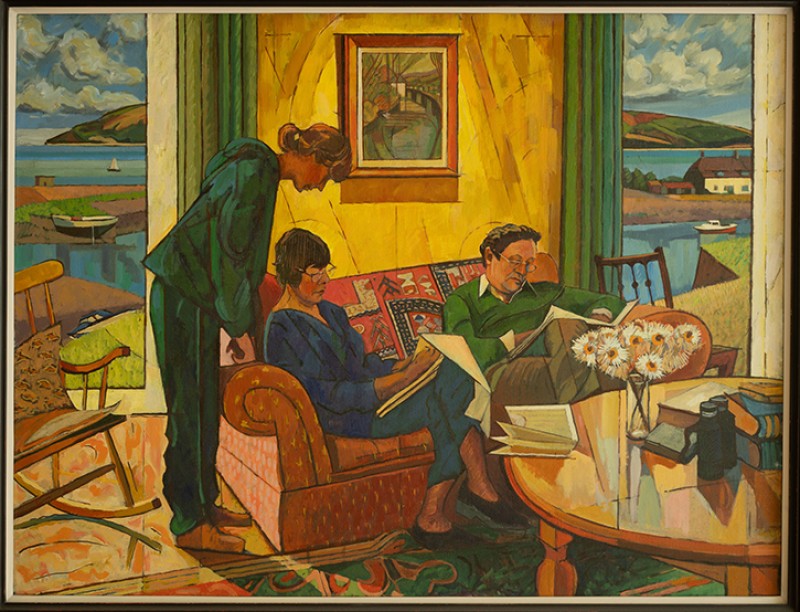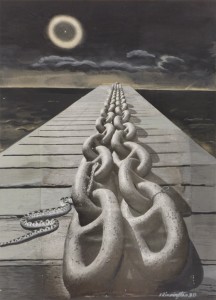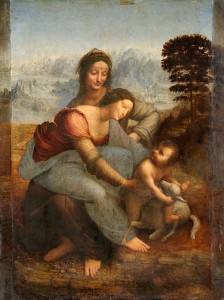At Norwich Castle we knew we were lucky to have René Magritte’s important oil La condition humaine (The Human Condition) in our art collection. The painting, however, is even more special than we thought…
Magritte painted La condition humaine in 1935; it was the fourth composition of the same title he painted between 1933 and 1935. All four compositions depict a painting within a painting, which was one of Magritte’s favourite themes: an easel supports an unframed painting in front of a landscape through an opening – in our case, the mouth of a cave. As the viewer we immediately assume that the painting on the easel continues to depict the landscape it hides; in other words, we assume that the castle in the painting on the easel is actually in the landscape behind. However we then ask ourselves, does what is depicted in the painting on the easel actually represent what it hides? In fact, both the painting and the painting within it are part of the same artistic fabrication – there is no difference between them – but our mind is tricked into thinking that one is real and the other one a representation. This tendency of our minds to try and make sense of the image is what may have inspired Magritte’s title.
Recently, La condition humaine was requested by the Centre Pompidou in Paris for their 2016/17 exhibition Magritte: La Trahison des Images. In order to assess its condition, we had the painting checked by Alice Tavares da Silva, a paintings conservator from the Hamilton Kerr Institute, University of Cambridge, who regularly works with our collections as a freelancer. Having unframed the painting, Alice noticed that the sections of canvas that wrapped around the back of the stretcher did not match the composition at the front. The paint on the bottom edge, in particular, appeared to show part of a separate composition altogether. Puzzled by her discovery, Alice undertook some research and came across the news that in 2013 conservators had found parts of a different composition under Magritte’s paintings The Portrait and The Red Model, from New York’s Museum of Modern Art and Stockholm’s Moderna Museet respectively. Through x-ray analysis and further investigation, MoMA’s conservators had realised that Magritte had painted The Portrait and The Red Model over the left half of his earlier work La pose enchantée, 1927, a large and important painting which had been missing since 1932.
Crucially, both The Portrait and The Red Model were dated 1935, like La condition humaine, and were similar in size. Comparing the lower edge of La condition humaine to the one surviving image of La pose enchantée, Alice became certain that our painting also formed part of the same composition. She had it x-rayed at the Hamilton Kerr Institute and the resulting image proved conclusively that this is indeed the case: La condition humaine was painted over the lower right quarter of La pose enchantée.
After lying undiscovered for 80 years, three quarters of La pose enchantée have now been found in New York, Stockholm and Norwich. So far no-one knows where the remaining section is. We do know its rough maximum dimensions and can probably guess that it also dates to 1935. At Norwich Castle we are thrilled to be part of this international art mystery and cannot wait to see where it is going to take us next.
Dr Giorgia Bottinelli, Curator of historic art at Norwich Castle Museum and Art Gallery
